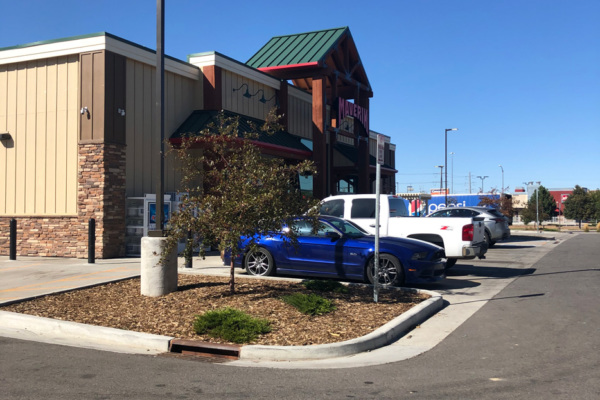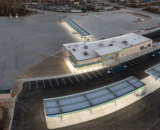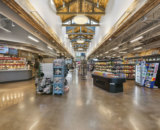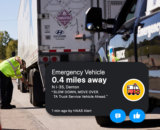In today’s retail environment, it is more important than ever for truckstop and travel center operators to determine what makes their brand unique and how they can capitalize on that irreplaceable aspect of their business to create a remarkable customer experience.
During NATSO Connect, branding expert Ernie Harker shared his knowledge from his time as the executive director of marketing for Maverik to help walk attendees through the branding techniques they used to create their own raving fans.
Stop Watch connected with Harker to learn more about what operators should think of when they consider their brand and how they can use branding to connect with customers and increase sales.
More than Colors and Logos
Harker said the biggest misconception people have with branding is they think it is a visual exercise about colors and logos. “Those are great things to have, but branding is a description of your personality,” he said. “When you know what your personality is, it makes it easier to express your personality.”
Companies can come up with five to seven adjectives to describe their business in a way that their competitors can’t. “At least one or two of those adjectives need to be unique to your business. If your adjectives can be used to describe your competitors, then they aren’t unique to you,” Harker said. “If you know what your personality is, it is easier to choose the right visual and verbal language to express your personality.”
Those who can differentiate their brand from their competitors are far ahead of the brand game, Harker said.
Companies should represent their personality in everything they do. “Your graphic design, logo, social media voice and community outreach are all an extension of your personality,” Harker said. “We choose to hang out with people based on their personalities. We choose to do business with businesses who we resonate with.”
It Starts Inside the Office
Organizations often think branding is an external exercise and something they do for the customer, but the customer really is the last person to be exposed to a brand, Harker said.
“Just being different doesn’t necessarily make you unique,” Harker said. “It has to start in the heart of the business in the corporate office. If the corporate office doesn’t know what the brand is about, how do you get that to your customers?”
Most of the products in a c-store are the same. “There is a small percentage that should be brand oriented,” Harker said. “The branding is about a personality. It is manifesting the personality of a company through what it says and how it looks.”
At Maverick, the brand even extended into how employees dressed. “When I first started working there, everybody had to wear slacks and button up shirts because we’re professionals. There were no jeans, no open toed shoes and no tennis shoes,” Harker said. “I thought, ‘If a vendor came in here, they would never know our brand is adventure is the first stop.’ If I were to go to REI headquarters in Seattle, I would know right away that they are about outdoor adventure.”
Brand needs to start at the inside and work its way out. “With any kind of product or service, you try to create a brand of aspiration,” Harker said. “Nike has done a good job of trying to stay at the heart of a real champion even when showing real people giving it the effort. I don’t want to see a brand compromise their passion.”
Even the best brands have to evolve. “Every brand that has been around for five to 10 years is going to go through a brand shift,” Harker said. “The things that are cool, popular and exciting in one decade won’t always translate to the next.”
Harker said executives can ask themselves how they want the company’s experience to be interpreted by the customer. “Once that is defined, you can ask yourself if your current brand is in line with that vision. If it isn’t, it can change,” he said. “You’ll know you’re in line or not with your brand when you’ve defined what you want your brand to be and how you want that brand to be identified.”
Cleanliness Should be an Attribute Rather than a Brand
Cleanliness is crucial in the truckstop and travel plaza industry, but cleanliness should be an attribute rather than a brand. “Every c-store restroom on the planet should be clean, but you have to set up the expectation for the employees,” Harker said.
Companies that do a good job of capitalizing on cleanliness enable their front lines to focus on the attribute. “It is the ones that skimp on cost so the guy that is supposed to be stocking the cooler and being the teller is also cleaning the bathrooms,” Harker said. “The restrooms are going to suffer because you have to have product to stock and have to have people working the registers.”
Branding on Social Media
Harker said companies can promote their brand via social media, but they need to think of social media as a dinner party. “If I invite someone over to dinner, and he wants to sell to me the whole time, I don’t invite him over again. Even though I know he sells things, I want to talk about some common interests,” Harker said. “I want to get to know him. Branding is about making an emotional connection with people.”
Operators shouldn’t underestimate the importance of sound, but the language and tone a brand uses also contribute to customers’ experiences. “The words we have, the phrases we use, and the music and voice we use reflect on brand personalities that you can choose to reflect your own,” Harker said. “Find a voice that resonates with your personality and really connects to your customers.”
Music is also reflective of a brand, and Harker said operators should be selective when choosing voices and music to represent the company.
Subscribe to Updates
NATSO provides a breadth of information created to strengthen travel plazas’ ability to meet the needs of the travelling public in an age of disruption. This includes knowledge filled blog posts, articles and publications. If you would like to receive a digest of blog post and articles directly in your inbox, please provide your name, email and the frequency of the updates you want to receive the email digest.



